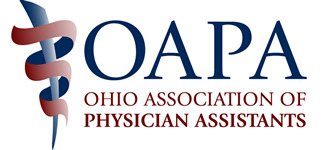About OAPA
Formed in 1975, the Ohio Association of Physician Assistants (OAPA) provides a foundation for the PA profession in the state of Ohio. We promote quality, accessible, and cost-effective patient care through a collaborative team-based approach with physicians and other healthcare providers.
OAPA advances the PA profession through legislation, community-building, educational opportunities, and career promotion to the general public. Learn more about our history and become a member of this ever-evolving organization.
Our Vision
Ohio is the premier state for PAs.
Our Mission
Remove obstacles and provide resources for the personal and professional development of Ohio PAs while promoting quality, accessible, and cost-effective patient care.
OAPA ensures the professional growth, personal excellence, and recognition of physician assistants in Ohio, and supports their efforts to improve the quality, accessibility, and cost-effectiveness of patient-centered healthcare.
To represent PAs and PA students to maximize the benefit of their services to the public, OAPA:
- Encourages its membership to render quality service to the health professions and to the public
- Develops, sponsors, and evaluates continuing medical or medically related education programs for PAs
- Assists in the development of role definition for the physician assistant
- Serves as a public information center with respect to its members, health professions, and the public
Our 2025-2026 Strategic Goals
In spring 2025, the OAPA Board of Directors identified four areas of strategic focus for the next 12-18 months:
- Advancing PA Advocacy Through Engagement and Legislative Outreach
- Enhancing OAPA Educational Opportunities for Growth and Sustainability
- Strengthening Membership Involvement and Leadership Development
- Expanding Pathways for Future PAs Through Outreach and Support

